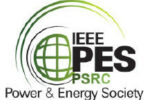by Christoph Brunner, it4power, Switzerland
I will clarify my view of the terminology, because since when we have a new hype in our industry, everybody uses the same buzz word, however, the meaning behind it could be quite different.
In the past year, you could not attend a conference related to protection, automation, and control of substations, without having at least a few papers talking about centralized or virtualized protection. As always, when we have a new hype in our industry, everybody uses the same buzz word, however, each one of us may have a different opinion as to what exactly he understands behind that buzz word. We noticed that about 10 years ago with Smart Grid and now we have the same with virtualization.
In this column, I want to discuss how IEC 61850 will be used with virtualized protection. But to have a common understanding, I will first clarify my view of the terminology.
Let’s start with the digital substation. A digital substation means that all components are integrated through communications. This includes remote analog to digital conversion of analog signals in Merging Units (MU) and transmission of sampled values as stream over the communication network. It also means remote I/O units to switchgear known as Switch Control Unit (SCU). Another element of a digital substation is the integration of new functions including primary equipment monitoring.
In a digital substation, protection and control functions are implemented in bay level devices that do not require binary or analog I/O signals. Basically, those are pure microprocessor systems with communication capabilities.
Therefore, the next step is obvious. Instead of limiting the functionality to a single bay, the functions from multiple bays can be realized in the same device. That’s what I would call centralized protection. There may still be multiple boxes (e.g. one per voltage level or per bus section) or there may be one big box for the whole substation. All that of course duplicated for main 1 and main 2. The key here is, that the software that runs in a device is one entity coming from one vendor. Products from vendors, that combine the functions for multiple bays in one device connecting through a process bus to MUs and SCUs have already existed for a few years.
Another approach to reduce the number of boxes is virtualization. In that case, instead of combining the functions for multiple bays in one piece of SW, the SW of a protection and control device for one bay is run on a virtual machine in a computer. Multiple devices can run on the same computer.
The two approaches have some fundamental differences regarding IEC 61850 and communication. In the centralized approach, we have one big IED; in the virtualized approach we still have the same number of IEDs. In the centralized approach, all the information flow between the functions of different bays will be device internal, so not necessarily visible over the standardized IEC 61850 communication. In the virtualized approach, the communication in principle remains the same except that some information exchange may be over a virtualized communication network.
With the assumption, to be able to document the complete system in IEC 61850 SCL (system configuration language), for the virtualized approach, there may be some extensions required to represent the computer running the virtual machines.
For the centralized approach, documenting the signal flow between bay functions that is now device internal in SCL will be possible with the new SourceRef introduced in the new part 90-30. Testing in a live environment using the IEC 61850 mechanisms for virtual isolation may be more challenging. With the current concept of handling simulated messages at the physical device level, it is not possible that the function, which is not in test, receives the normal message, and the function, which is in test, receives the same simulated message.
To handle such a situation, one possibility is to multiply the message, i.e. create multiple messages with the same data. Another possibility is a feature that was designed in the standard but that has not yet been much explored. The standard allows us, with a DO InRef, to specify the reference to the source of an input to a logical node including the message through which that signal is received. That same DO InRef also has an attribute tstRef for a reference to a test signal and its message and a possibility to switch between the original signal and the test signal individually per input. With that, we can switch the inputs to be received from a test message instead of the original message, without the need to have the message declared as a simulated message.
To summarize, centralized and virtualized protection are enabled through the introduction of digital substation with IEC 61850 process bus. IEC TC57 WG10 has started an ad hoc task force that is currently investigating the impact of centralized and virtualized protection on IEC 61850.
Biography:

Christoph Brunner is the President of his own independent consulting company it4power LLC based in Switzerland. He has over 25 years of experience with knowledge across several areas within the Utility Industry and of technologies from the Automation Industry. He has worked as a project manager at ABB Switzerland Ltd in the area of Power Technology Products in Zurich / Switzerland where he was responsible for the process close communication architecture of the automation system. He is Convener of WG 10 of the IEC TC57 and is a member of WG 17, 18 and 19 of IEC TC 57. He is member of IEEE-PES and IEEE-SA. He is an IEEE Fellow and is active in several working groups of the IEEE-PSRC and a member of the PSRC main committee and the subcommittee H. He is advisor to the board of the UCA international users’ group.









